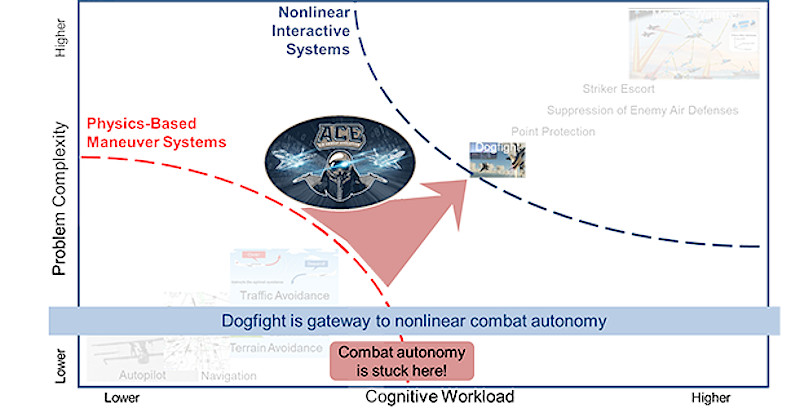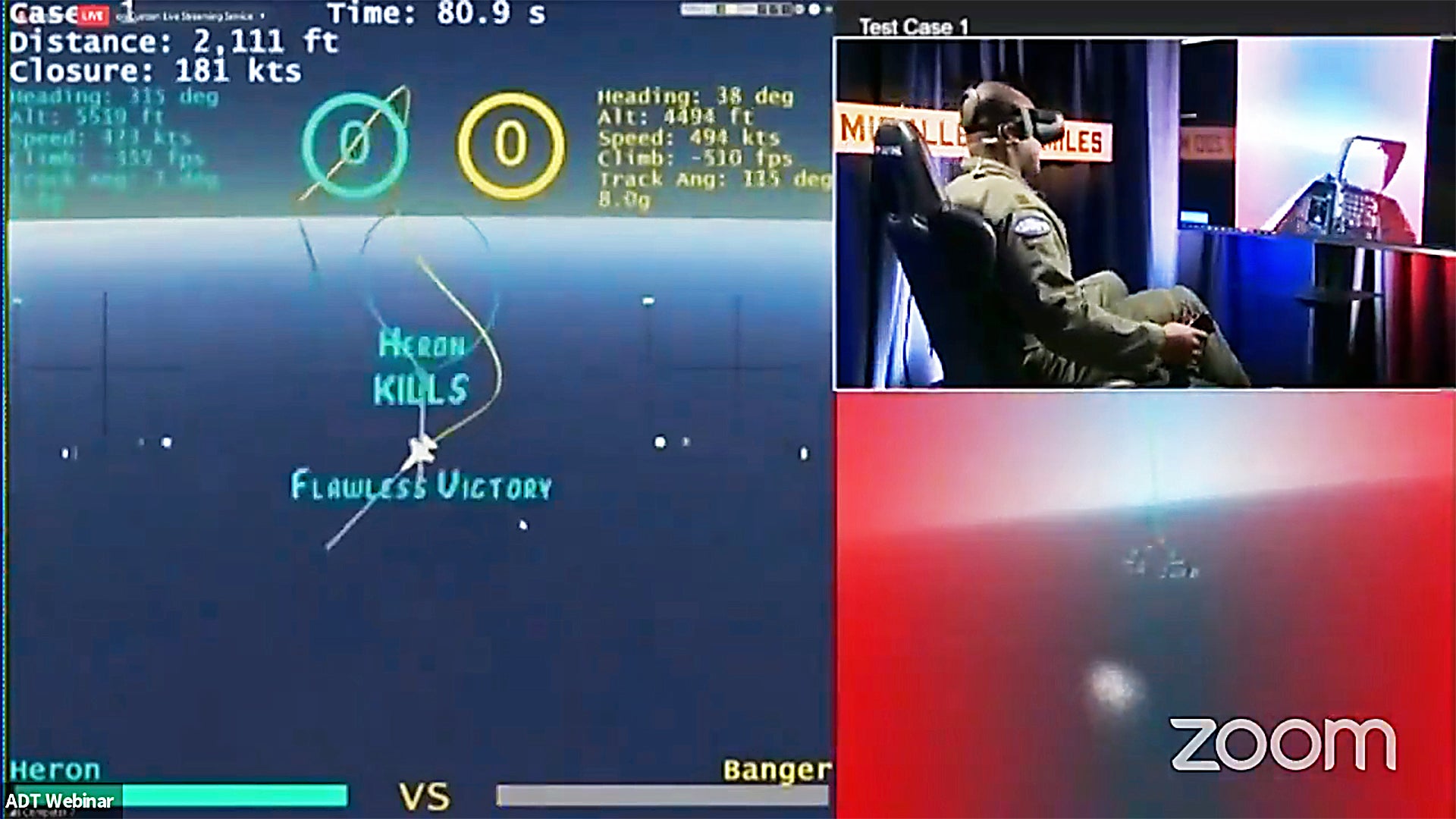A simulated F-16 Viper fighter jet with an artificial intelligence-driven “pilot” went undefeated in five rounds of mock air combat against an actual top Air Force fighter jockey today. The event was the culmination of an effort that the Defense Advanced Research Projects Agency (DARPA) began last year as an adjacent project to the larger Air Combat Evolution (ACE) program, which is focused on exploring how artificial intelligence and machine learning may help automate various aspects of air-to-air combat.
Heron Systems, a company with just 30 employees, had beaten out Aurora Flight Sciences, EpiSys Science, Georgia Tech Research Institute, Lockheed Martin, Perspecta Labs, PhysicsAI, and SoarTech to claim the top spot in the last of Defense Advanced Research Projects Agency’s (DARPA) AlphaDogfight Trials. This three-day event had started on Aug. 18, 2020.
You can watch the full live stream of the third day of the AlphaDogfight Trials below.

On the first day, all eight teams had spared against five different types of simulated adversaries that Johns Hopkins University’s Applied Physics Laboratory (APL) had developed. This included one dubbed a “zombie,” with a flight profile similar to a cruise missile or a large drone, as well as ones that performed like fighter jets, such as the F-16 Viper, or heavy bombers, according to Air Force Magazine.
On Aug. 19, the teams ‘flew’ against each other, whittling down the number of competitors to four finalists – Aurora Flight Sciences, Heron Systems, Lockheed Martin, and PhysicsAI – who moved on to the last phase. Those four remaining teams then battled each other in semi-finals earlier today.
Lockheed Martin beat Physics AI, while Heron Systems defeated Aurora Flight Sciences. Heron Systems pulled out a major upset over number two ranked Lockheed Martin before going on to face the actual human F-16 pilot, with the callsign “Banger,” from the District of Columbia Air National Guard, who was also a graduate of the Air Force Weapons School’s F-16 Weapons Instructor Course.
This tournament was the third and final trial in a series of events that started in November 2019. That initial trial involved teams flying simulated F-15 Eagle fighter jets, while the second one, which took place in January of this year, shifted to using the F-16 as the representative aircraft. The teams taking part in the competition this week again used digital representations of the Viper.


It’s not entirely clear how the outcome of this tournament may now impact the larger Air Combat Evolution (ACE) program directly. DARPA has said in the past that it hopes the event will at least “energize and expand a base of AI developers” for ACE.

“Even though [dogfights are] probably less likely in the future, the need for an ability to handle that sort of situation won’t go away,” Air Force Colonel Daniel “Animal” Javorsek, who is the program manager for ACE at DARPA, had told Air Force Magazine in an interview about ACE and the AlphaDogfight effort. “We continue to use it as a gateway into these more demanding scenarios like suppression of enemy air defenses or offensive counter-air.”

The first phase of ACE is scheduled to wrap up next year and will include flight tests of experimental AI-driven systems to enable various kinds of autonomous capabilities on subscale propeller-driven and jet-powered unmanned aircraft. DARPA has plans for two subsequent phases, each 16 months long, that would transition those systems onto larger aircraft types.
The software and any other systems that come out of ACE, which could help improve the autonomous operation of unmanned aerial vehicles, as well as provide new kinds of automated assistance to the crew of manned aircraft, could then migrate to the Air Force around 2024. “As we are kind of pushing the roles and responsibilities of pilots into this battle manager category, then what we’re essentially doing in this program is enabling the autonomy to be even more capable to handle that aircraft maneuver and these rapid, high-tempo decisions in a dynamic environment,” Colonel Javorsek said.
AlphaDogfight and ACE could certainly help inform a number of different programs ongoing now within the Air Force that are exploring future autonomous and semi-autonomous unmanned aircraft capabilities, as well as the use of artificial intelligence and machine learning in the development of ‘virtual co-pilots‘ for manned types. The best known of these projects is the Skyborg autonomous drone program, which you can read about in more detail in these past War Zone pieces.
The Air Force Research Laboratory’s (AFRL) Autonomy Capability Team 3 (ACT3) is also working on a separate suite of systems that it hopes will be ready to control a drone in a dogfight against a manned fighter jet sometime next year. This program is called R2-D2, a reference to the iconic droid from the Star Wars universe whose primary function is to serve as a robotic navigator and flight engineer.
The AlphaDogfight Trials themselves also reflect a broader effort across the U.S. military to explore new, novel ways of engaging with both private companies and academic institutions to help speed up the development of various advanced capabilities. This has included the establishment of multiple technology incubators positioned around the United States, starting with the Pentagon’s Defense Innovation Unit (DIU) in 2015.
No matter what, the digital dogfights today certainly underscores the ever-growing interest in artificial intelligence and autonomous capabilities throughout the U.S. military. It’s certainly notable that Heron Systems’ algorithms were able to go toe-to-toe with an actual Air Force fighter pilot and come out undefeated, but it remains to be seen whether this experience will reflect the outcome of any actual live flight testing in the future. It also may not necessarily represent just how advanced AI-infused autonomous aerial warfare is at present. Regardless, this was a very public display of the future of aerial combat.
Contact the author: joe@thedrive.com
